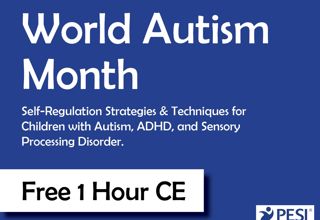How to Navigate a Sensory World with an Autism Diagnosis

"What? He doesn't want friends?"
I hear this over and over from people who are talking about a child who has Autism. The human drive to connect to others is universal. We all want friends, all of us. However, as powerful as the drive to connect with other people is, protecting ourselves from perceived threat is greater.
Imagine if…
If people only judged your outward behavior, they may think that you don’t want to be social. When the truth is your fear responses to the sensory environment creates reactions that will often not look socially appropriate.
When children with Autism learn to navigate their sensory world and understand that a simple touch on the shoulder is not a threat, they are better able to reach out socially.
But to help children with Autism master this skill, we must first help them have a solid understanding of how each sensory system in our body works and impacts our ability to successfully navigate our social world. One way to teach this is to follow the Social Sense Program.
In the Social Sense Program, children are trained to view themselves as scientists trying to figure out their social world. As scientists, they strive to be keen observers of the world around them and ask questions about what they observe. This allows the children to draw conclusions about how the world works. The information gathered allows them to see opportunities to learn the how, what, and why of social interactions.
In this sample lesson from the Social Sense Program, we look at how the seven senses can be used as science tools to explore and interpret the social world.
The process of learning to navigate a sensory overloaded world can take years. Until then we need to understand that sensory defensiveness that results in a fear-response does not equate to a LACK of desire for friendship. Quite the contrary. Those with autism just need someone to understand them and be their friend. The best way for us to help children with autism is by helping the children and adults around them realize that they have the same drive we all do…to connect with those around them.
I hear this over and over from people who are talking about a child who has Autism. The human drive to connect to others is universal. We all want friends, all of us. However, as powerful as the drive to connect with other people is, protecting ourselves from perceived threat is greater.
Imagine if…
- A simple touch ignited a fear response in you so great that you want to scream or hit.
- The sound of a vacuum cleaner or toilet flushing caused you to cover your ears and run out of a room.
- A room full of people caused your nervous system to become so overwhelmed that you started to flap your hands, talk to yourself or simply shut down.
If people only judged your outward behavior, they may think that you don’t want to be social. When the truth is your fear responses to the sensory environment creates reactions that will often not look socially appropriate.
When children with Autism learn to navigate their sensory world and understand that a simple touch on the shoulder is not a threat, they are better able to reach out socially.
But to help children with Autism master this skill, we must first help them have a solid understanding of how each sensory system in our body works and impacts our ability to successfully navigate our social world. One way to teach this is to follow the Social Sense Program.
In the Social Sense Program, children are trained to view themselves as scientists trying to figure out their social world. As scientists, they strive to be keen observers of the world around them and ask questions about what they observe. This allows the children to draw conclusions about how the world works. The information gathered allows them to see opportunities to learn the how, what, and why of social interactions.
In this sample lesson from the Social Sense Program, we look at how the seven senses can be used as science tools to explore and interpret the social world.
Download the Social Sense Science Tools Lesson
The process of learning to navigate a sensory overloaded world can take years. Until then we need to understand that sensory defensiveness that results in a fear-response does not equate to a LACK of desire for friendship. Quite the contrary. Those with autism just need someone to understand them and be their friend. The best way for us to help children with autism is by helping the children and adults around them realize that they have the same drive we all do…to connect with those around them.
This blog was brought to life by PESI authors:
Tara Delaney, MS, OTR/L is a pediatric occupational therapist who has worked with children for more than 20 years. Tara regularly conducts seminars nationally and internationally on sensory integration, child development, Autism and behavioral issues. Tara is the author of the best-selling The Sensory Processing Answer Book (Sourcebooks) and 101 Games and Activities for Children with Autism, Asperger’s and Sensory Processing Disorders (McGraw-Hill).
Mary C. Hamrick, MA, CCC-SLP, is a nationally recognized speaker in the area of Speech and Language Development and Disorders, Specific Learning Disabilities, and Social Intelligence — specifically how sensory processing impacts social development.




